Mold and mildew is unpleasant and can destroy your tent. Mold and mildew commonly set in when your tent has been stored without properly drying it out. There are several commercial products available for mold and mildew removal. However, the solutions recommended by many manufacturers are simple and inexpensive products you may already have on hand.
Cause and Effect
Mold and mildew can affect tents made from either canvas or synthetic materials. Moisture from condensation, humidity, rain and snow can leave your tent damp after an outing. Even small amounts of moisture can leave your tent vulnerable to mold and mildew growth. Mold and mildew can take hold within a couple days, and must be dealt with immediately. Mold and mildew can damage your tent, destroying the material beyond repair. They pose health risks, such as triggering allergic reactions.
Preparation
Before any treatment, dry the tent and remove as much mold and mildew as possible. Set your tent up outdoors, leaving the doors and windows open. Sunshine will help kill mold and mildew. If you can't set the tent up outdoors, set it up in your garage or spread it out in a dry location. Avoid bringing the tent in the house. Test the cleaning solution on a small portion of your tent, in a spot where damage will not affect the performance of the tent.
Cleaning
Prepare a solution of one quart of vinegar and a half a teaspoon of dish soap in 5 quarts of hot water. Wipe down the tent walls and floor. Gently scrub the area affected by mold or mildew with a soft bristled brush. When your tent is dry, apply seam sealer or other weatherproof coatings per the manufacturer's instructions. Allow your tent to dry completely before storing. Another cleaning solution recommended by manufacturers is 1 cup of salt and 1 cup lemon juice (concentrated) per 1 gallon hot water. Enzyme-based odor removers are also recommended.
Tent Care
The best way to treat mold and mildew is to never let it happen. After using your tent, shake or sweep it out dirt and debris that may harbor mold and mildew. At home, pitch your tent and wipe down the interior and exterior with clean water. Allow your tent to dry completely before packing it up for storage. Store your tent and other equipment in a cool, dry location.
Warnings
Never use chlorine bleach to clean your tent. Bleach is corrosive and can damage the fabric and weatherproofing. Additionally, using bleach in the enclosed space inside your tent is dangerous, and may lead to respiratory problems or other health issues. Bleach is only proven for use on hard, non-porous surfaces. Avoid aromatic cleaners, particularly ones scented with pine, floral and similar perfumes. The aroma left behind may attract insects and animals to your tent.
Related Articles

Sauna Cleaning Requirements

How to Clean a Sheepskin Coat

How to Remove Lye Stains
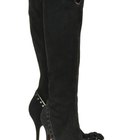
Can You Put Scotch Guard on Suede Boots?
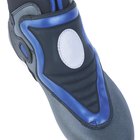
How to Clean a Musty Smell from the ...

Can You Wash a Pleather Purse?

How to Prevent Getting Ringworm in the ...

How to Prevent Fabric Dry Rot

How to Get Paint Off of Your Uggs
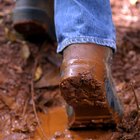
How to Clean Discolored Shoes

How to Remove the Smell of Cat Pee From ...

How to Repair a Mink Coat That Is ...

How to Preserve Bird Nests

How to Remove a Mold Stain From a Ski ...

How to Restore Weathered Metal Furniture
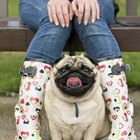
How to Clean Scuffed Up Rain Boots
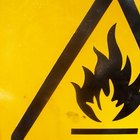
Safety Hazards of Acetone

How to Waterproof a Coat
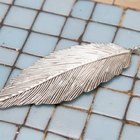
How to Make Homemade Silver Jewelry ...

How to Get Rid of Skin Mildew
References
Writer Bio
Deborah Lee Soltesz is a web developer who has been creating websites, promotional materials and information products since 1992. Soltesz has a Bachelor of Science in computer science and engineering. She worked in earth and space science research writing for scientific and general audiences for more than a decade.